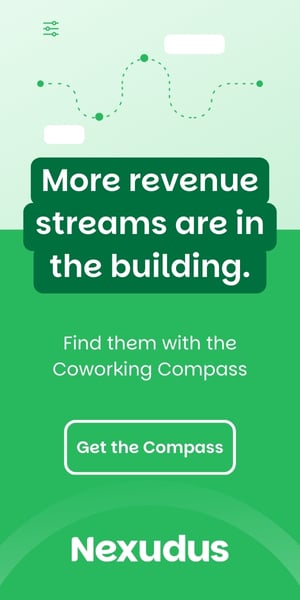- Without tailored, interactive insights, workplace leaders risk making costly, inefficient decisions about their spaces.
- While 91% of business leaders recognize that workplace design delivers ROI, only 49% actively measure space utilization.
- Workplace leaders need contextualized insights — not spreadsheets filled with disconnected data points.
The way people use office space has fundamentally changed. Hybrid work has made attendance unpredictable. Businesses are reevaluating real estate costs. Companies are experimenting with flexible workspace models — yet many still rely on outdated methods to track office usage.
The problem? Workplace data is often incomplete or misleading. Traditional occupancy reports and badge swipe data don’t tell the full story.
A meeting room might appear fully booked, but last-minute cancellations go untracked. A company may assume they need more space, when in reality, employees are only coming in midweek.
Without tailored, interactive insights, workplace leaders risk making costly, inefficient decisions about their spaces.
The real estate reckoning
The days of unlimited office space are long gone. With rising real estate costs, unpredictable employee attendance, and evolving workforce expectations, business leaders must justify every square foot.
Despite real estate being one of the top three business expenses, most organizations still lack clear visibility into how effectively their space is being used. A recent Envoy survey highlights this disconnect — while 91% of business leaders recognize that workplace design delivers ROI, only 49% actively measure space utilization.
Even with advancements in workplace technology, companies continue to struggle with fragmented data, outdated occupancy metrics, and inconsistent reporting. These gaps lead to underutilized space, unnecessary costs, and workplace strategies that fail to align with actual employee needs.
Why “more data” isn’t sufficient
Many organizations assume that simply collecting more data will lead to better decision-making. But raw numbers alone are not enough. Workplace leaders need contextualized insights — not spreadsheets filled with disconnected data points.
One of the biggest challenges is that workplace data is often siloed. Attendance tracking, desk reservations, visitor management, and meeting room bookings are typically handled by separate tools, making it difficult to form a cohesive view of how space is actually being used.
Even when data is available, it is frequently complex, incomplete, static, or difficult to interpret, leaving workplace leaders without clear next steps. This lack of clarity results in missed opportunities — underutilized meeting rooms, wasted operational costs, and frustrated employees struggling to find available workspaces.
Without an integrated approach to workplace intelligence, companies risk making expensive, uninformed decisions that fail to align with how employees actually interact with their office environments.
Optimizing for the future: moving from data to decisions
Leading organizations are shifting from passive data collection to proactive, data-driven workplace optimization. The key is interactive analytics that connect attendance patterns, space utilization, and cost efficiency into one cohesive view.
Rather than simply reporting on past occupancy trends, modern workplace intelligence solutions can identify usage patterns, detect inefficiencies, and provide strategic recommendations.
By leveraging tailored insights, workplace leaders can optimize office layouts, resourcing, and operational strategies. For instance, advanced analytics can reveal underutilized spaces, allowing companies to consolidate or repurpose them to better support collaboration and employee engagement.
Tailored insights can help leaders optimize desk and meeting room configurations based on historical booking trends, ensuring that available spaces match actual demand. Standardized reporting across multiple locations eliminates inconsistencies, allowing companies to align workplace decisions with broader business objectives.
Instead of reacting to workplace inefficiencies after the fact, organizations can proactively design work environments that are efficient, cost-effective, and adaptable to evolving workforce needs.
The business case for smarter workplace analytics
As organizations navigate the new world of work, the cost of not using data effectively is increasing. Companies that fail to leverage workplace intelligence risk:
- Wasted real estate expenses on space that doesn’t match actual employee behavior.
- Employee dissatisfaction due to inefficient layouts, overcrowded hot desks, or inaccessible meeting spaces.
- Inability to justify office investments in an era where CFOs demand measurable ROI.
The solution isn’t to eliminate offices — it’s to design smarter, more efficient workspaces that evolve with employee needs.
Workplaces that work smarter, not harder
The future of work isn’t just about having a physical office — it’s about having the right office. The companies that will thrive are those that embrace actionable insights to create work environments that are cost-effective, employee-friendly, and built for long-term success.
Blind spots in workplace data are no longer acceptable. The time for actionable analytics is now.


 Dr. Gleb Tsipursky – The Office Whisperer
Dr. Gleb Tsipursky – The Office Whisperer Nirit Cohen – WorkFutures
Nirit Cohen – WorkFutures Angela Howard – Culture Expert
Angela Howard – Culture Expert Drew Jones – Design & Innovation
Drew Jones – Design & Innovation Jonathan Price – CRE & Flex Expert
Jonathan Price – CRE & Flex Expert










